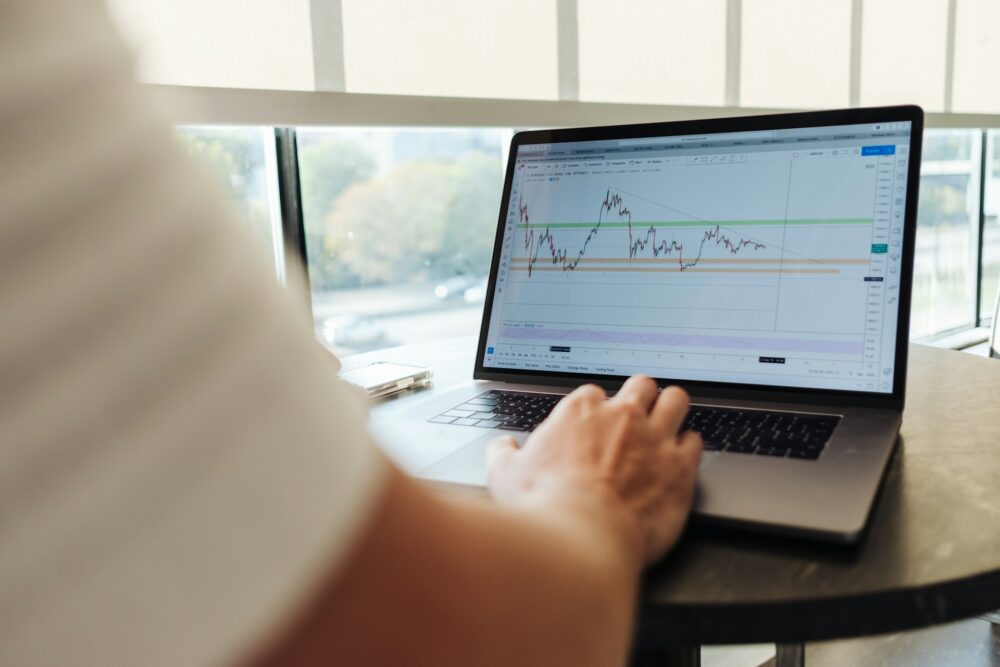Fintech
Why the Global Fintech Sector Is Seeing a Decline in Activity
The volume of fintech deals in 2023 fell about 70 percent from the 2021 peak, making it more similar to the volume of five years ago. Lower M&A volume accounted for the overall decline, with fewer deals above $1 billion announced. Private capital raising picked up again at the end of the year, with volume in the fourth quarter at $15 billion, 30 percent higher than the previous year.

The year 2023, with all its ups and downs – from bank crashes to a record high for the S&P 500 – has been a year of reassessment for the fintech sector. Exaggerated valuations were reconsidered and there were only a few mega-deals.
Against the background of the exaggerations of the last few years, a reorientation took place among both founders and investors. Business models and goals are being re-evaluated.
Read more about the hurdles facing the global fintech sector and find other important business news from around the world with the Born2Invest mobile app.
Fintech companies face challenges
FT Partners Research has presented the first study on the development of global FinTech activities in 2023. This includes extensive analyzes of private company financing, IPOs and M&A transactions.
Despite the challenges in the overall market, there continues to be numerous FinTech innovations in different market segments and regions around the world. Early-stage financing and established players in particular benefit from this.
Decline in global fintech activity
The volume of fintech deals in 2023 fell about 70 percent from the 2021 peak, making it more similar to the volume of five years ago. Lower M&A volume accounted for the overall decline, with fewer deals above $1 billion announced. Private capital raising picked up again at the end of the year, with volume in the fourth quarter at $15 billion, 30 percent higher than the previous year.
Public markets have seen a return in international FinTech IPO activity in 2023, although debuts and performance have not been particularly good. A number of high-profile fintech companies have recently filed for an IPO in the US, and with the market hitting its yearly high in December, many are excited to see whether the rally and confidence in the market will continue.
Compared to volume, the number of deals in both financing and mergers and acquisitions has held up better.
Insights into the fintech market
Over the past two years, funding activity has shifted to earlier or smaller deals, with 65 percent of funding rounds under $10 million (up from 46 percent in 2021). Seed funding reached an all-time high in 2022 with volume of more than $5 billion across 1,100 deals. Significant seed stage activity continued into 2023, with overall deal volume and number higher than 2021 and previous years
After the high of 2021, late-stage activity continued to normalize. Series D+ funding levels in 2023 are almost identical to 2020.
Many prominent companies continued to announce big deals – Stripe, Visma and Metropolis all raised funding rounds of more than $1 billion and more than 15 companies achieved unicorn status, including Cart.com, AlphaSense, Quantexa, Kin and Employment Hero.
Mergers and acquisitions in the fintech sector
When it comes to mergers and acquisitions, almost half of all deals announced for 2023 were under $100 million. Still, the last half of the year saw a resurgence in larger deals: 16 mergers and acquisitions worth more than $1 billion were announced in the third and fourth quarters, up from 25 for the entire year.
The biggest deals in 2023 included GTCR’s $18.5 billion acquisition of a majority stake in Worldpay from FIS (a significant decrease from FIS’s original $43 billion acquisition of the company in 2019) and Nasdaq’s $11 billion acquisition of Adenza.
Given depressed public market valuations earlier this year, several publicly traded companies were taken private, including EngageSmart ($4.0 billion), Network International ($2.8 billion), Duck Creek ($2.6 billion) and Paya ($1.3 billion).
__
(Featured image by Jason Briscoe via Unsplash)
DISCLAIMER: This article was written by a third party contributor and does not reflect the opinion of Born2Invest, its management, staff or its associates. Please review our disclaimer for more information.
This article may include forward-looking statements. These forward-looking statements generally are identified by the words “believe,” “project,” “estimate,” “become,” “plan,” “will,” and similar expressions. These forward-looking statements involve known and unknown risks as well as uncertainties, including those discussed in the following cautionary statements and elsewhere in this article and on this site. Although the Company may believe that its expectations are based on reasonable assumptions, the actual results that the Company may achieve may differ materially from any forward-looking statements, which reflect the opinions of the management of the Company only as of the date hereof. Additionally, please make sure to read these important disclosures.
First published in Der Bank Blog. A third-party contributor translated and adapted the article from the original. In case of discrepancy, the original will prevail.
Although we made reasonable efforts to provide accurate translations, some parts may be incorrect. Born2Invest assumes no responsibility for errors, omissions or ambiguities in the translations provided on this website. Any person or entity relying on translated content does so at their own risk. Born2Invest is not responsible for losses caused by such reliance on the accuracy or reliability of translated information. If you wish to report an error or inaccuracy in the translation, we encourage you to contact us

-

 Africa1 week ago
Africa1 week agoMorocco Charts a Citizen-Centered Path for Ethical and Inclusive AI
-

 Markets5 days ago
Markets5 days agoSoybean Market Reacts to Trade Hopes, High Stocks, and Global Price Pressure
-

 Business2 weeks ago
Business2 weeks agoDow Jones Nears New High as Historic Signals Flash Caution
-

 Cannabis2 days ago
Cannabis2 days agoSwitzerland Advances Cannabis Legalization with Public Health Focus
























